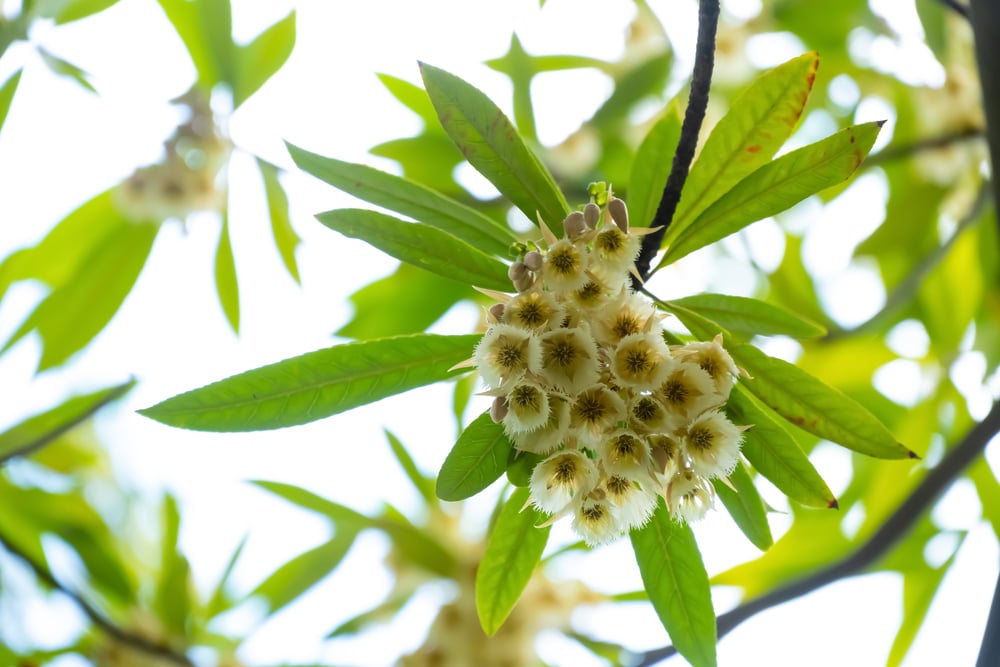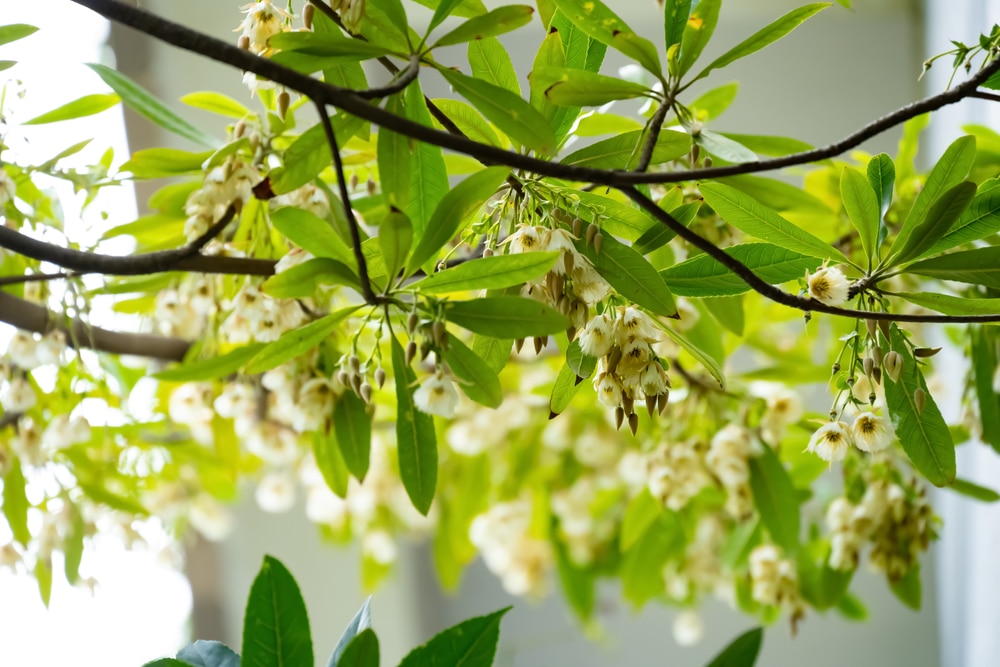Japanese blueberry trees are lovely ornamental evergreens commonly used to decorate the front of the home. They are generally pretty small and easy to manipulate, making them the perfect addition to any porch or doorway.
If you’re considering adding one of these attractive plants to your home, you are likely curious about the Japanese blueberry tree’s pros and cons.
The best way to determine if you live in the right environment for this foliage is to determine what type of care it needs. Below you will find information about this plant and its ideal environment. We’ll discuss Japanese Blueberry Tree pros and cons.
Care

Caring for a Japanese blueberry tree is not very difficult. It needs a regular amount of water, and unless you want to prune it as a topiary tree, there isn’t much you need to do as long as the environment is right.
Water Requirements
Like most plants, this tree will need extra water until it gets established. Typically, it will be mature enough after two seasons to water once or twice a week.
Soil Requirements
This plant will do well in slightly acidic or alkaline soil, unlike other evergreens. The most important thing is moist, rich soil that drains well.
Light Requirements
This tree prefers full sun to partial shade. Unfortunately, this can put it at risk of sunscald, so if you live in an area with scorching summers, you may choose to cover the tree to help protect it.
Zone
This tree prefers warmer zones eight through 11. It won’t tolerate harsh winters or long-term freezes.
Bloom Time
In the spring, the Japanese blueberry tree produces small white flowers with an alluring scent. In the winter months, the tree has small, dark-blue berries. Although humans are discouraged from eating them, many bird species and wildlife benefit from this fruit.
Pruning
This tree doesn’t require much pruning if you are happy with it the way it is. Left to grow unrestricted, these plants can reach 40 feet, which is considered a medium-sized tree. However, this is the perfect plant for the job if you enjoy shaping your trees. Its dense foliage is easy to guide into clean shapes and exciting creations.
If you choose to prune this tree, it’s best to do so when the weather isn’t extreme. Doing so when it is too hot or cold can cause stress and leaf drops.
Pests and Other Problems
This tree has thin bark and is susceptible to borers which are insects that burrow into the wood. Certain molds, such as sooty tree mold, are one of the few infections that plague this plant. Fortunately, it’s usually harmless, but it is unsightly. That can be a problem if you use the trees as decoration.
Pros and Cons
These beautiful trees are lovely additions to many homes and gardens. With a bit of research on the climate in your area and some preparations, you shouldn’t have trouble adopting this plant. Below is a summary of the Japanese blueberry tree’s pros and cons.
Pros
- This tree is easy to care for and a fantastic choice for beginners that want to practice topiary.
- It’s resistant to many pests and diseases. You won’t have to be concerned about bringing contagions to your garden.
- This tree is evergreen; you can enjoy it year-round.
- In the spring, you can enjoy the lovely scent of this tree.
Cons
- The berries from this tree can be messy, so you might want to avoid planting them where they will stain your porch or driveway.
- The roots of this plant need a lot of room to spread out, so you can’t plant it too close to other foliage.
Japanese Blueberry Tree Pros and Cons: Final Thoughts
The Japanese blueberry is a remarkable tree that will thrive in the right conditions. As an ornamental evergreen, few trees can match it for ease of care and style. If you’re interested in introducing this plant to your yard, a little research and preparation can make all the difference.

